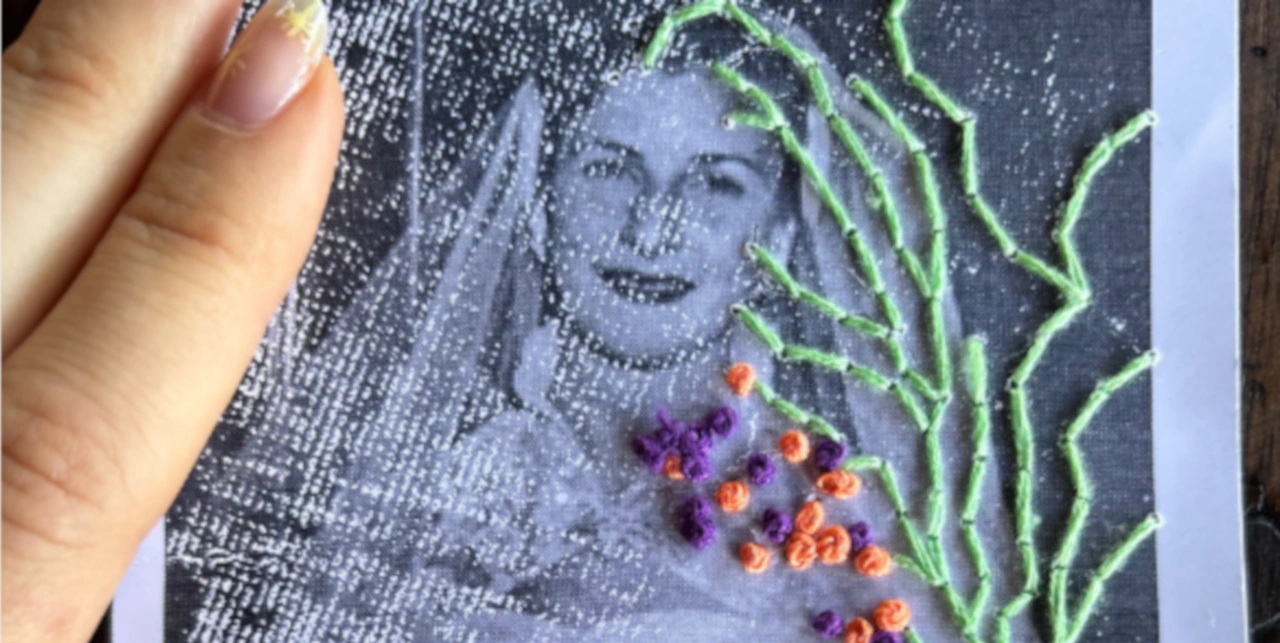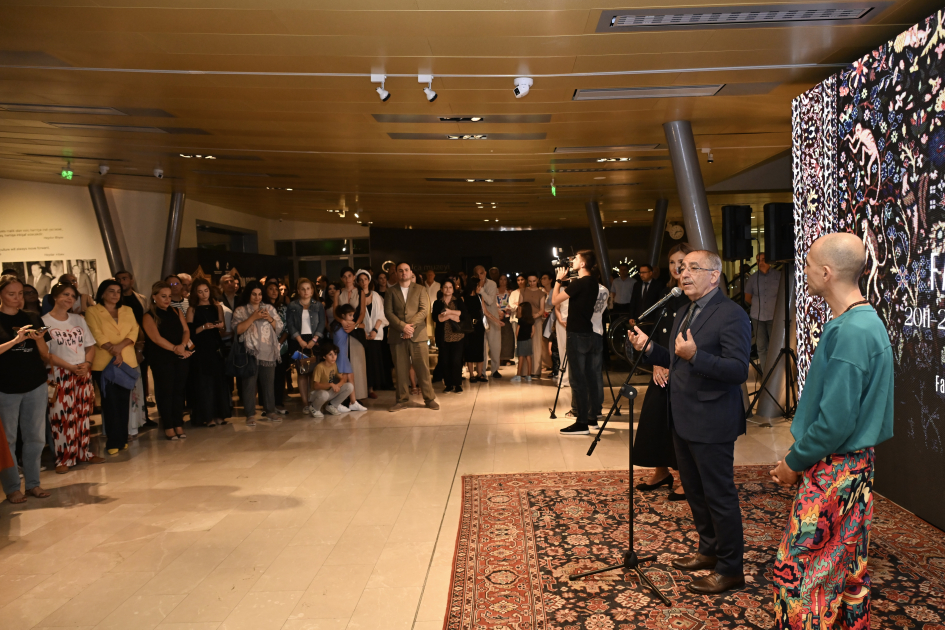
Fiber arts and textile traditions from around the world will be showcased throughout October’s Portland TextileX Month. The citywide festival will have exhibits, workshops, artists talks, studio sales and dozens of other events, including community quilt making; many are free to attend.
The theme for 2025 Portland TextileX Month is legacies, and experts will relay the stories, traditions and knowledge passed forward through fabric and fibers used to create functional, fashionable and purely sculptural pieces.
Festival co-founder and director Caleb Sayan of Textile Hive in Portland represents a continuation of his family legacy.
His mother, the late Andrea Aranow, a fashion designer and textile scholar who famously dressed guitarist Jimi Hendrix in snakeskin bell bottoms a half century ago, was a storyteller of textiles, Sayan said.
Over her long, adventurous life, she met makers and curated an irreplaceable collection of 50,000 unique textiles from 70 countries representing two centuries of design history.
Her textile library of living cultures, known as The Andrea Aranow Textile Design and Material Design Collections, is treasured by artists, designers, educators, historians and others who access the textile designs in-person at Textile Hive or through its database of the largest digitized independent textile collection in the world.
Aranow’s work and collections continue to inspire new looks and influence leaders in apparel, home decor and other trend-setting industries, from footwear and upholstery, to wallpaper and stationery.
She was an expert not just on the feel, finish and flow of fabric, and its appearance, but also on its cultural significance over time, said Sayan. Most important, she cherished the artists who embellish materials or navigate needles to create beauty, from French curtains to Victorian laces, he added.
On Oct. 23, Portland TextileX Month participants can tour the Textile Hive showroom. The free event, Weaving a Living Archive: Space, Memory, Material, and Process at 5-7:30 p.m., will include a panel discussion with Sayan, Patricia Gohier of Gohier Interior Design and curator Daniel Wallace of Northwest Designer Craftartists.
The 2025 Portland TextileX Month festival starts Wednesday, Oct. 1, with a 5-7 p.m. celebration of SCRAP, a center for reusable materials, and its new Southeast Portland location. The free event includes a collaborative activity using circular weavings on repurposed objects to create art.
Register in advance at textilex.org to attend events.
Portland TextileX Month is part of a mission-driven social enterprise organized by Textile Hive and presented through TextileX to foster exchange among the Portland textile community and beyond, say organizers.
“Creating fiber arts offers a way to preserve traditions and pass knowledge across generations while also transforming what we inherit into something new,” said Sayan in a news release.
“In times of societal uncertainty, these practices provide spaces for dialogue, collaboration and creative resilience, allowing communities to process change together,” he continued. “Fiber arts also serve as a medium for social and political expression, giving form to stories, struggles and visions of the future.”
Festival highlights
Here are some of the creative and collaborative events offering during the 8th Portland TextileX Month:
Past Threads, Future Fits on Oct. 18 is a workshop on Black textile legacies and regenerative fashion organized by ELSO (Experience Life Science Outdoors) and Black Earth United crafted clothing.
Participants will create small textile pieces using recycled and donated fabrics with facilitators Jocelyn Rice, Kenneth Turner and Evette Gonzalez (noon-1:30 p.m., donation requested).
Embroidered Stories on Oct. 27 is a free stitching circle organized by artists Palmarin Merges and Merridawn Duckler. Participants will transform clothing connected to important women in their lives into embroidered journals. Beginners will learn three embroidery stitches and all are invited to experiment with fabric collage while sharing stories from 7-8:30 p.m.
Kombucha: Past, Present, and Future is a hands-on workshop 1-2:30 p.m. on Oct. 4 organized by SuSeLi to explore kombucha cellulose (symbiotic culture of bacteria and yeast or SCOBY).
Participants will engage with pellicle sheets, learn brewing techniques and discuss the contested naming and history of what can be referred to as kombucha “leather.” The workshop is free to watch or $60 to make a craft to take home.
Natural Patterns: Katazome Stencil Dyeing workshop Oct. 25-26 presented by the Portland Japanese Garden with Oregon artist Karen Illman Miller introduces participants to katazome: the Japanese method of using exquisitely cut paper stencils and resist paste to dye fabrics. A behind-the-scenes video of Miller’s practice is paired with youth stencil exercises ($22.50).
Warp Speed: Contemporary Conversations in Fiber exhibition through Oct. 25 at Pacific Northwest College of Art’s Center for Contemporary Art and Culture was curated by Marsha Mack and features new works in fiber from Portland-based artists Carolyn Hazel Drake, Michael Espinoza, Abbie Miller, Melissa Monroe and Joshua Sin.
Supported by the Ford Family Foundation, the admission-free show is accompanied by lectures, a panel discussion 6 p.m. to 7:30 p.m. Oct. 15 and a tufting workshop 10 a.m. to 5 p.m. Oct. 18.
ThreaDNA: Personal Archive Pictures Embroidery x Collaging is a free workshop 11 a.m. to 1 p.m. Oct. 25 to learn the art and craft of tatreez, an ancient, culturally significant form of embroidery. Participants will bring personal photographs to enhance with stitches creating geometric and floral patterns.
Slovak Kroj: Passing on Traditions Through Color and Needlework is a free talk noon-1:30 p.m. Oct. 26 presented by Bea Fields highlighting the distinctive design and cultural meaning of the Slovak Kroj, a ceremonial dress with layers of varied embroidery and vivid color. The unique design of each garment can be traced back to individual villages throughout Slovakia.



